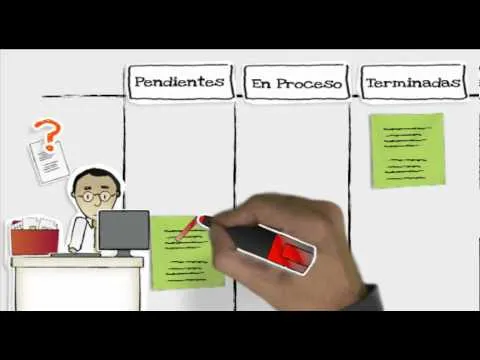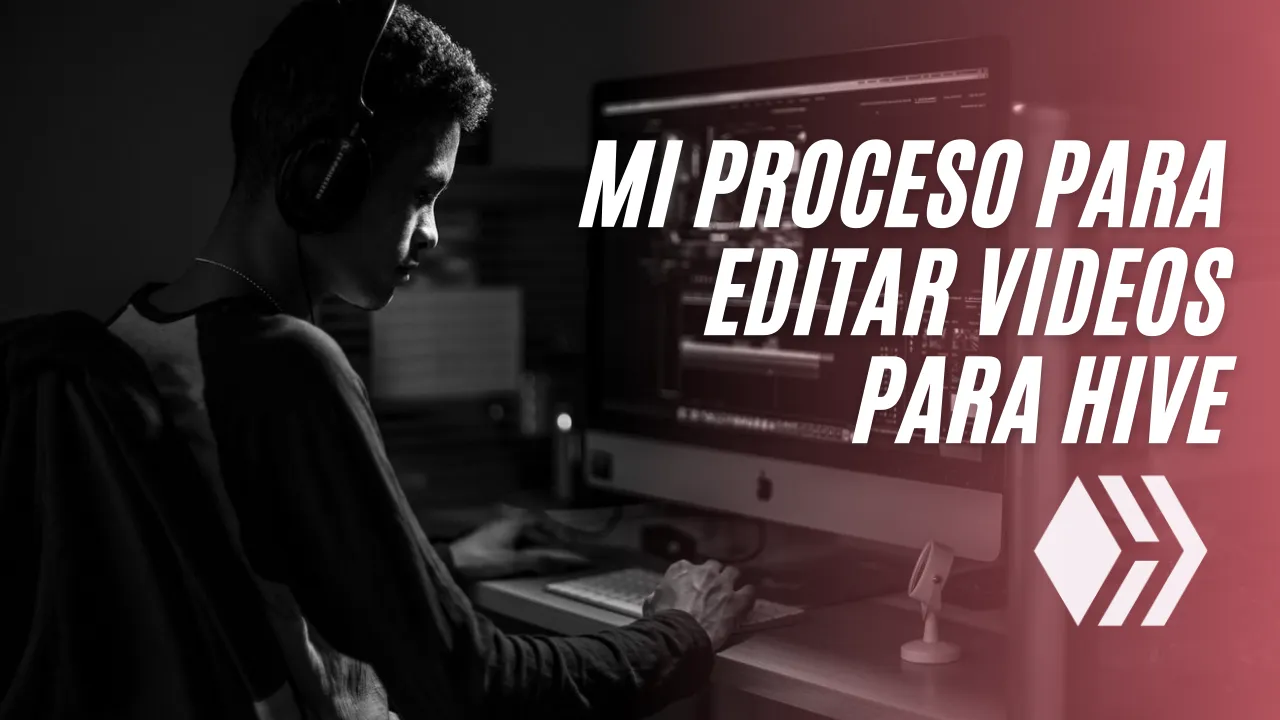
Buenas amigos de HIVE, han pasado unas lunas desde mi último post. Mi impulso por compartir esta vez me trajo a escribir acerca de mi proceso para crear videos y artículos para el canal principal donde comparto mis videos y este es: ¡SORPRESA, SORPRESA! "HIVE".
Entrando en materia, mi proceso para producir contenido consta de 2 partes principales: 1 Es el contexto físico y 2 El marco que utilizo para ordenar mis ideas y lograr un flujo de trabajo ordenado que me ayude a hacer esta actividad lo más eficiente posible.
1.- En el contexto físico.
La hora correcta
La primera cosa que debes tener en cuenta y que te recomiendo que descubras es en que parte del día tus ideas fluyen mejor, si eres una persona madrugadora o si como yo eres una persona nocturna, esto está relacionado también con reducir el máximo el número de interrupciones para así evitar distracciones que al final son perdida de tiempo.
Mantente hidratado.
Puede sonar obvio como todo lo importante, pero es importante estar hidratado antes de realizar labores cognitivas y tener agua al alcance, en mi caso siempre tengo 1 botella de agua de 750 ml cerca, de esta manera evitar romper el estado de Flow cuando escribo, además de las interrupciones estar deshidratado te hace tonto, debido a que la deshidratación está relacionada con reducción de procesos como el aprendizaje, el razonamiento, la atención, la memoria, ¡¡casi nada!!
Escuchar Música Adecuada y Audífonos.
Otra cosa que me ayuda muchísimo a mantener la concentración es escuchar música con audífonos, a parte del beneficio aislarte de ruidos molestos que puedan distraerte. Yo personalmente escucho música electrónica de varias Playlist que tengo guardadas en mi reproductor de Spotify, te dejare el nombre de estas aquí.
Deep Concentration
Focus Flow
Enfoque con Energia
Pomodoro
De vez en cuando es necesario hacer pausas activas para regenerar tus neuronas y estirar las piernas, pero eso también puede provocar desconexión, para evitar esto utilizo una aplicación móvil que se llama Brain focus es un reloj de 100% programable y está disponible en Android y IOS, que en sencillos términos es un método de trabajo de trabajo de 25 min de trabajo por 5 de descanso. Yo lo tengo programado en 40/15 porque a mí me resulta así.
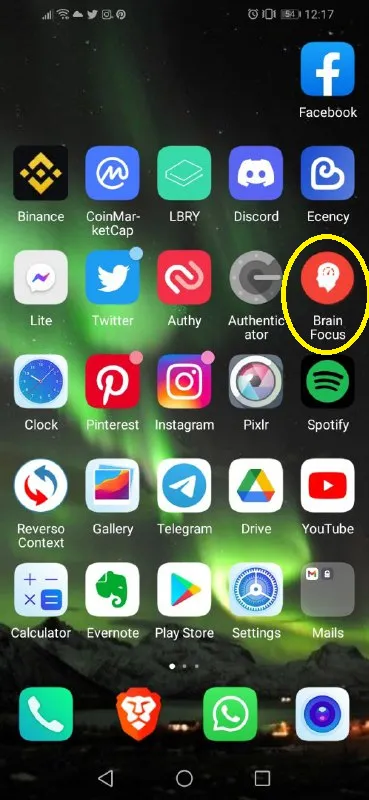
2.- Marco de Trabajo
Tablero Kanban
Ya con estos temas resueltos vamos a la segunda parte del proceso, el marco que utilizo para trabajar. Para esto debo hablarle brevemente del método Kanban, que no es más que un método para gestionar el flujo de trabajo, compuesto de un tablero de tres columnas: “Por hacer”, “haciendo” y “Hecho”. que te ayuda a visualizar fácilmente en que parte del proceso estas, evita la multitarea y facilita el trabajo continuo, como es un tema bastaste extenso te dejare un video corto que te lo explica mejor que yo.
Porque te explico todo esto para que entiendas porque utilizo Trello, que en palabras simples es un Kanban online intuitivo muy potente con muchísimas funciones para equipos y demás, pero yo solo lo utilizo para gestionar mis tareas/proyectos.
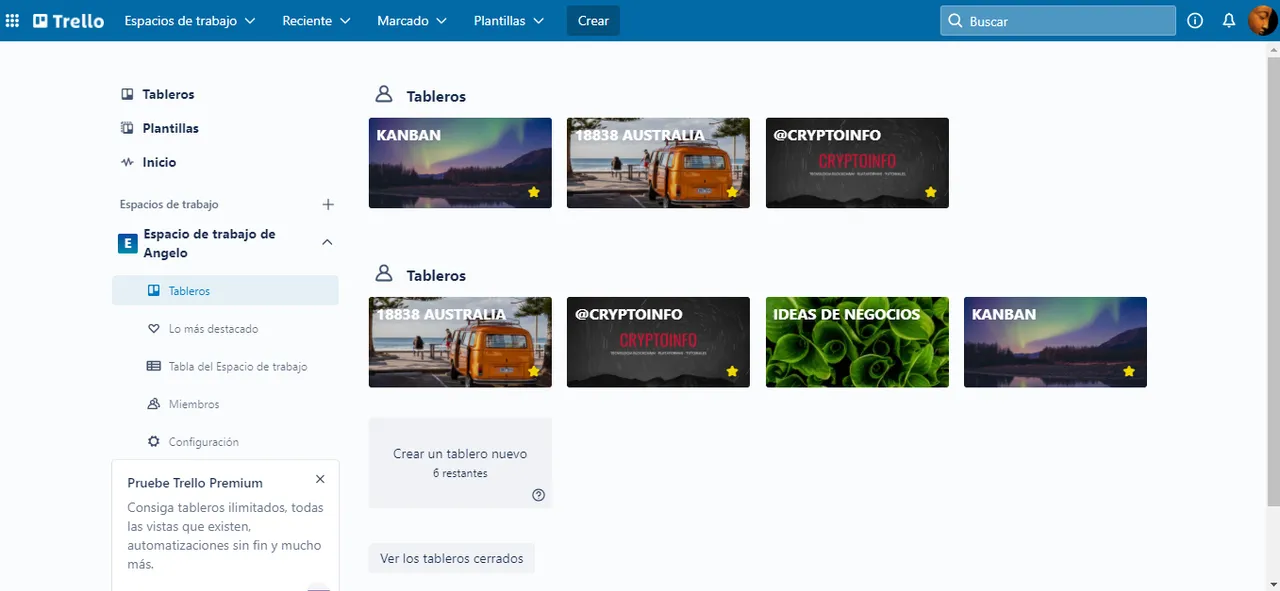
Como lo vez en la foto tengo 3 tableros principales de los proyectos en los que estoy trabajando, para efectos de este articulo nos concentráremos tablero de cryptoinfo donde organizado mi proceso de trabajo.
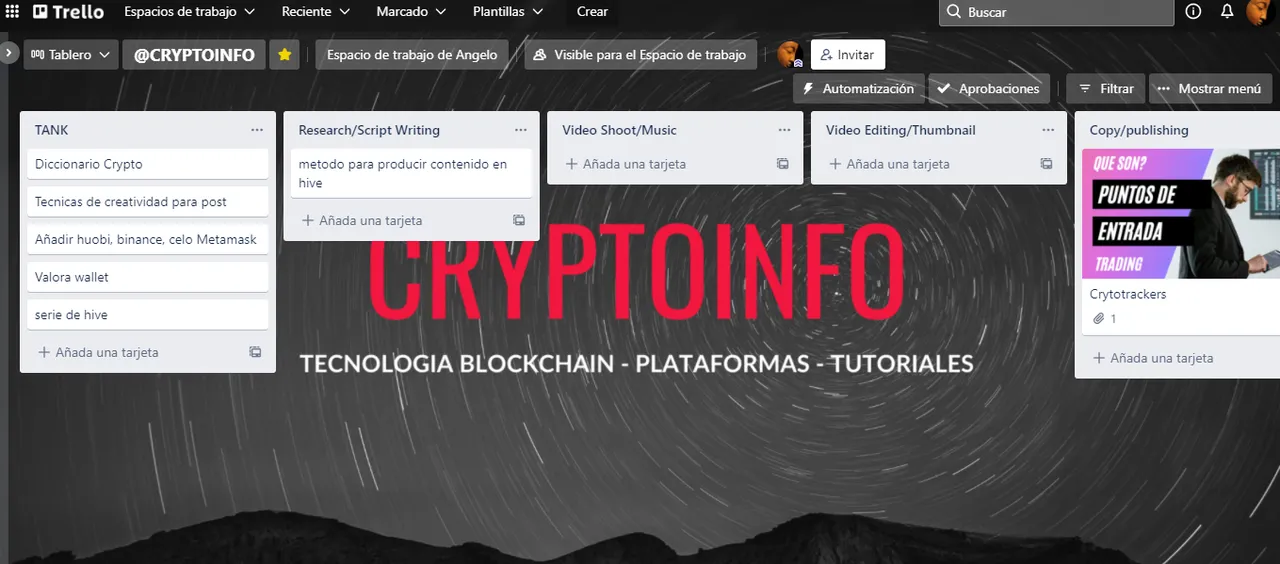
Como pueden observar en la primera columna de tablero dice la palabra "TANK" o tanque y es el lugar donde escribo las tarjetas de todos los posibles temas que quiero hablar, no tiene ningún orden especifico, para iniciar el proceso de edición solo tomo cualquiera e inicio el proceso.
Research/ script writing,
Para esta columna arrastro la tarjeta elegida para comenzar el proceso de producción de un video, una vez la tarjeta está ubicada en esta, me dedico a recopilar información relevante para mi proyecto y lo almaceno en una nota de mi aplicación de EVERNOTE con el nombre del video y abro una carpeta en mi escritorio con el mismo nombre para ir depositando allí todo el material audiovisual que utilizare.
Para los que no sepan que es EVERNOTE, es una aplicación Móvil y Escritorio, disponible para Android y IOS que sirve para tomar diferentes tipos de notas es super potente e intuitiva, la llevo utilizando años y no tengo ni una sola queja, allí voy escribiendo todo el texto de mis videos y artículos en su versión de escritorio.
Una vez terminada la investigación, comienzo a estructurar el guion con una plantilla que tengo que se llama base de guiones, empiezo a redactar y quedarme solo con lo esencial del video, lo demás lo elimino.
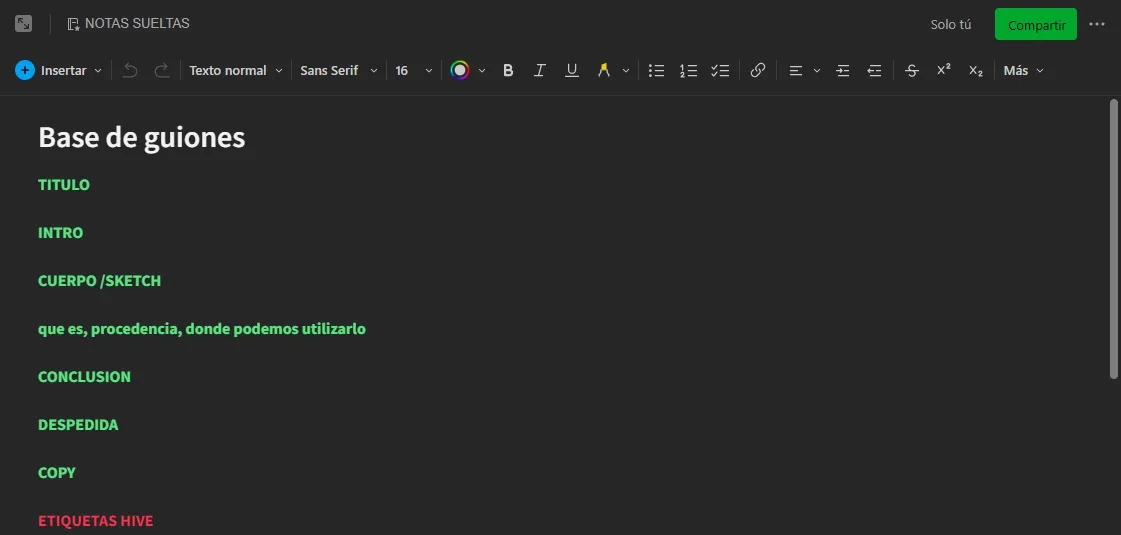
Video Shoot/Music
Al terminar el guion procedo a poner manos a la obra e ir grabando el video con mi editor de video, esto es generalmente la fase que me toma más tiempo y la que tardo más simplificar, pero con la practica cada vez lo hago más rápido.
Respecto a la música, generalmente la busco en YouTube o Spotify. Normalmente es electrónica similar a la que escucho cuando estoy escribiendo para concentrarme. La utilizo al comienzo y al final del video en la despedía. Cuando finalmente se cuál es, la convierto a mp3 en una web llamada Y2META, es facilísima, solo copio la URL de la canción de YouTube, la pego en el campo y le doy a descargar.
Video Editing/Thumbnail
En esta parte el trabajo principal que realizo es eliminar el desperdicio, para quedarme con lo estrictamente necesario, y arreglo aspectos como el sonido que siempre es un problema especialmente si grabo en diferentes días y utilizo los recursos que guarde anteriormente en la carpeta de material audiovisual del video.
La segunda parte del trabajo de esta columna es crear la miniatura para ello me valgo del siempre útil Canva editor o en su defecto Pixlr editor. Esta parte me gusta porque es bastante rápida, no me complico solo busco una plantilla donde se lea bien el título y utilizo la foto más adecuada de la carpeta de medios del proyecto y la guardo a su vez en esa misma carpeta.
Copy/publishing
Cuando arrastramos la tarjeta a esta columna ya estamos en la recta final para publicar, aquí escribo la descripción del video, también tengo una plantilla para estos en mi editor de PeakD, busco las etiquetas idóneas, además de traducirlos con la herramienta de deepL translator.
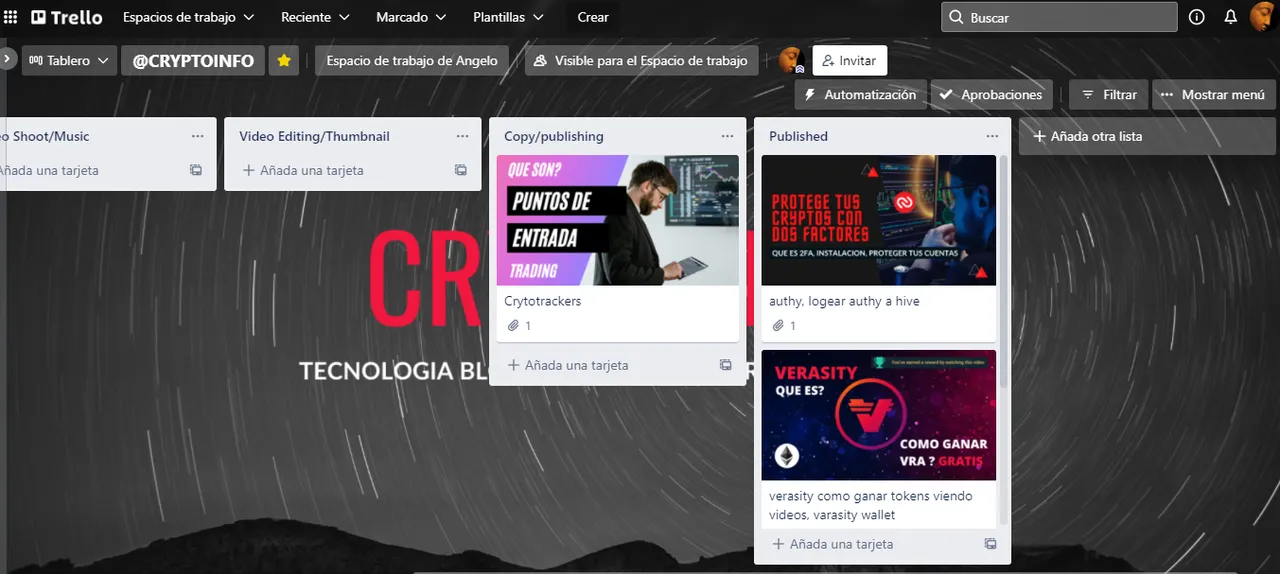
Con todo lo anterior ya es solo cuestión subir el video y rellenar los campos con la información anteriormente redactada, Presiono el botón de publicar y FIN. ¡¡Pues no!!
Después de Publicar me doy un break de un par de días para recargar energía creativa y comienzo un nuevo ciclo.
Espero que te sea de utilidad algo de lo que leíste en este post, si quieres saber que más herramientas uso para publicar en Hive, te recomiendo que leas mi artículo kIt basico para producir contenido en HIVE, donde te explico cada una de ellas.
ENGLISH VERSION
Good friends of HIVE, it's been a few moons since my last post. My impulse to share this time brought me to write about my process to create videos and articles for the main channel where I share my videos and this is: SURPRISE, SURPRISE! "HIVE".
Going into it, my process to produce content consists of 2 main parts: 1 Is the physical context and 2 The framework I use to order my ideas and achieve an orderly workflow that helps me to make this activity as efficient as possible.
1.- The physical context.
The right time
The first thing you should take into account and that I recommend you to find out is in what part of the day your ideas flow better, if you are an early bird or if like me you are a night person, this is also related to reduce the maximum number of interruptions to avoid distractions that in the end are wasted time.
Stay hydrated.
It may sound obvious as everything important, but it is important to be hydrated before doing cognitive work and have water within reach, in my case I always have 1 750 ml bottle of water nearby, this way I avoid breaking the state of Flow when I write, besides interruptions being dehydrated makes you dumb, because dehydration is related to reduction of processes such as learning, reasoning, attention, memory, almost nothing!!!!
Listen to Appropriate Music and Headphones.
Another thing that helps me a lot to maintain concentration is listening to music with headphones, besides the benefit of isolating you from annoying noises that can distract you. I personally listen to electronic music from several playlists that I have saved in my Spotify player, I will leave the name of these here.
Deep Concentration
Focus Flow
Focus with Energy
Pomodoro
From time to time it is necessary to take active breaks to regenerate your neurons and stretch your legs, but that can also cause disconnection, to avoid this I use a mobile application called Brain focus is a 100% programmable clock and is available on Android and IOS, which in simple terms is a work method of working 25 min of work by 5 of rest. I have it programmed at 40/15 because it works out that way for me.
2.- Work Framework
Kanban Board
With these issues resolved, let's go to the second part of the process, the framework I use to work. For this I must talk briefly about the Kanban method, which is nothing more than a method to manage the workflow, consisting of a board of three columns: "To do", "Doing" and "Done". that helps you easily visualize where you are in the process, avoids multitasking and facilitates continuous work, as it is a fairly extensive topic I will leave you a short video that explains it better than me.
Because I explain all this so you understand why I use Trello, which in simple words is a very powerful intuitive online Kanban with lots of functions for teams and others, but I only use it to manage my tasks/projects.
As you can see in the picture I have 3 main dashboards of the projects I am working on, for the purpose of this article we will focus on cryptoinfo dashboard where I organize my work process.
NV: 2 IMAGES OF THE CRYPTOINFO DASHBOARD
As you can see in the first column of the board it says the word "TANK" and it is the place where I write the cards of all the possible topics I want to talk about, it does not have any specific order, to start the editing process I just take any of them and start the process.
Research/ script writing,
For this column I drag the chosen card to start the production process of a video, once the card is located in this, I dedicate myself to collect relevant information for my project and store it in a note of my EVERNOTE application with the name of the video and open a folder on my desktop with the same name to deposit there all the audiovisual material that I will use.
For those who do not know what is EVERNOTE, is a Mobile and Desktop application, available for Android and IOS that serves to take different types of notes is super powerful and intuitive, I've been using it for years and I do not have a single complaint, there I write all the text of my videos and articles in its desktop version.
Once the research is finished, I start to structure the script with a template I have called script base, I start to write and stay only with the essentials of the video, the rest I eliminate.
Video Shoot/Music
Once I finish the script I proceed to get to work and record the video with my video editor, this is usually the phase that takes me the longest and simplifies the most, but with practice I do it faster and faster.
Regarding the music, I usually look for it on YouTube or Spotify. It's usually electronic similar to what I listen to when I'm writing to help me concentrate. I use it at the beginning and end of the video in the farewell. When I finally know what it is, I convert it to mp3 on a website called Y2META, it's really easy, I just copy the URL of the song from YouTube, paste it in the field and hit download.
Video Editing/Thumbnail
In this part the main work I do is to eliminate the waste, to stay with what is strictly necessary, and fix aspects such as sound that is always a problem especially if I record on different days and use the resources that I saved previously in the folder of audiovisual material of the video.
The second part of the work of this column is to create the thumbnail for it I use the always useful Canva editor or Pixlr editor. I like this part because it is quite fast, I don't complicate it, I just look for a template where the title can be read well and I use the most appropriate photo from the media folder of the project and I save it in that same folder.
Copy/publishing
When we drag the card to this column we are in the final stretch to publish, here I write the description of the video, I also have a template for these in my PeakD editor, I look for the suitable tags, in addition to translate them with the deepL translator tool.
With all the above, it's just a matter of uploading the video and filling in the fields with the information previously written, I press the publish button and FIN. Well no!!!
After publishing I take a break for a couple of days to recharge my creative energy and start a new cycle.
I hope you find useful some of what you read in this post, if you want to know what more tools I use to publish in Hive, I recommend you to read my article kit basico para producir-contenido en HIVE, where I explain each one of them.
THANKS FOR READING THIS FAR
Edicion | Edition : @cryptoinfo1(with canva editor)
Front Cover | image from Pexels - Rodolfo Quiroz
Translated with DeepL Translator

